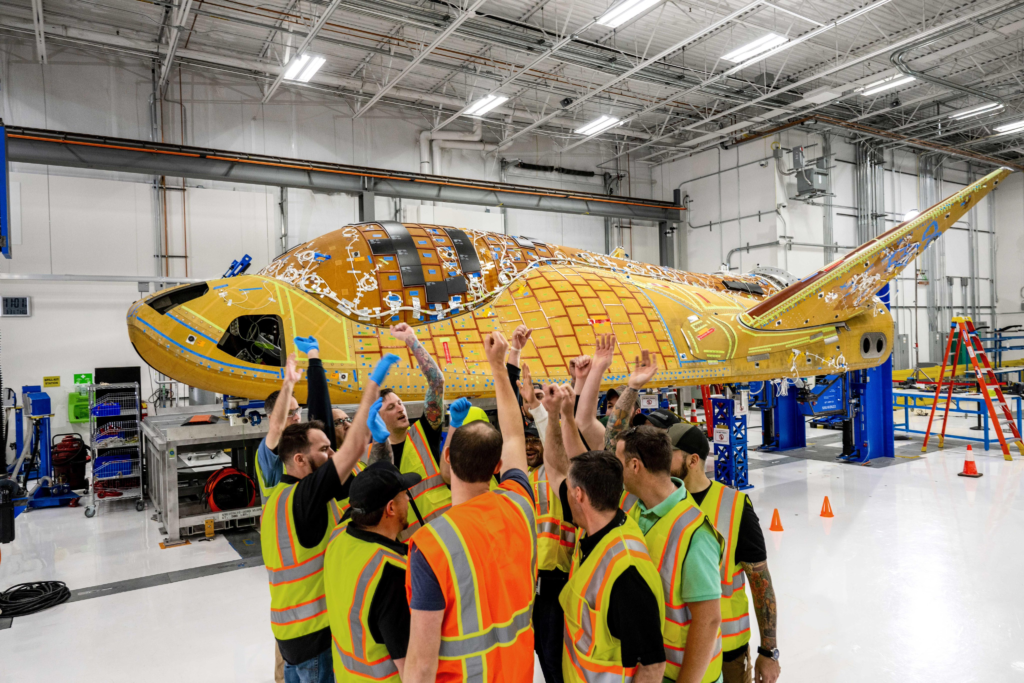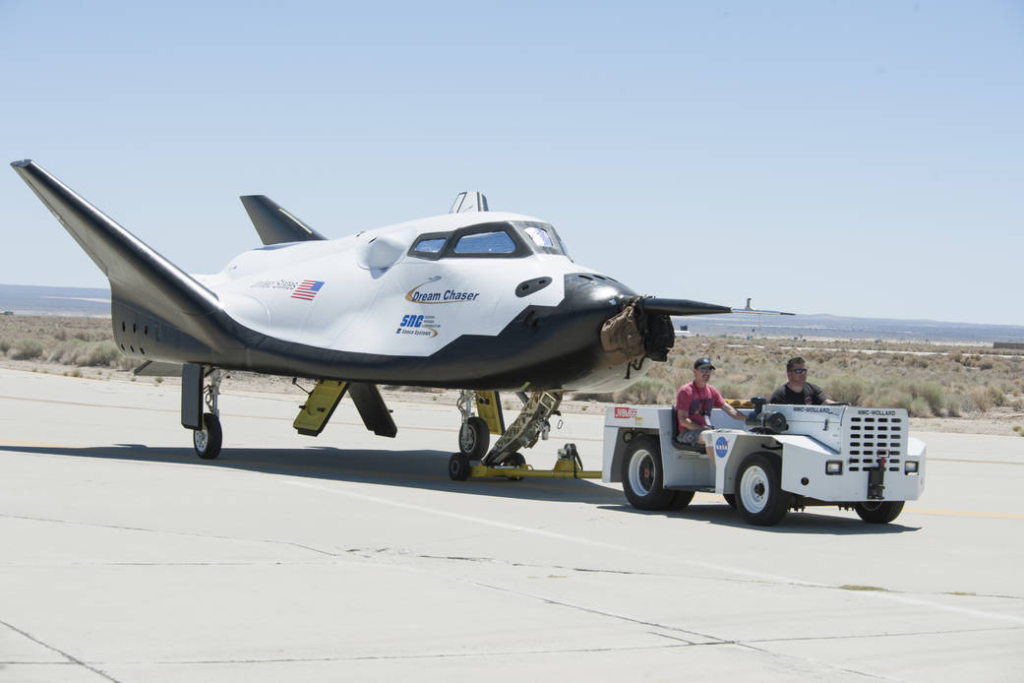
Sierra Space Continues To Make Progress On Dream Chaser
Sierra Space is one of many different companies within the industry trying to change how we access space. In this case, the company is working on Dream Chaser, a unique reusable spaceplane designed for future crew and cargo operations. While this project has been under development for quite a while now, the company has been making some significant progress toward the first launch.
In the last few months, Sierra Space has kept us updated on both Tenacity and a brand new test article under construction. These two will eventually be flown to space if everything goes according to plan. Under NASA’s Commercial Resupply Services 2 (CRS-2) contract, Dream Chaser will provide a minimum of seven cargo service missions to and from the space station.
With an expected launch date not far away during the summer of 2023, the company is closer than ever to Dream Chaser’s first official launch. While there have been a lot of delays on this initial flight over time, the company is confident this time around and has some progress to show for it. Here I will go more in-depth into the expected launch date, recent progress, what to expect, and more.
Launch Date & Progress

The first launch of Dream Chaser is expected to happen on top of United Launch Alliance’s Vulcan Centaur. In terms of when we should expect to see this launch happen, the president of Sierra Space recently gave us an estimate. Specifically, just a few weeks ago in late September, Janet Kavandi, president of Sierra Space, said the company now expected the first flight of Dream Chaser to take place in the summer of 2023. Other estimates put the first flight around quarter 3 of 2023 which matches with this comment. Based on this, if everything goes according to plan, a launch in July or August next year could be expected. However, this brings up the question of what are the actual chances the launch happens around this estimate. Vulcan should not be a problem as it recently began receiving some of its flight engines and will likely launch very soon. Dream Chaser, however, still has some work necessary.
In the last few months, Sierra Space has provided a few updates on Tenacity. This is the Dream Chaser test article expected to go to space apart of the upcoming mission. Through these updates, we have seen some of the construction and general progress it has made. One of the last substantial updates on Tenacity came earlier this year when Sierra Space tweeted saying, “In case you missed it, our first Dream Chaser spaceplane recently completed static and pressure testing in Colorado and will soon be ready for shipment to @NASA’s Neil A. Armstrong Test Facility (Plum Brook Station) later this year.” They also released a video that highlighted some of the construction and preparation for testing. This being said, not long from now, Dream Chaser is slated for its first official NASA mission. Loaded atop a Vulcan Centaur launch vehicle, the reusable spaceplane will try to demonstrate its ability to reach the International Space Station (ISS), bearing a full payload of cargo weighing 12,000 pounds.
Offering a smooth 1.5 G re-entry experience, NASA has booked the next-generation Dream Chaser for multiple future missions, with regular government launches expected from thereon out. As the Dream Chaser begins regular missions, Sierra Space is confident it will be in hot demand as its capabilities and flexibility for other missions become apparent. The Dream Chaser won’t purely be for government customers, however. Sierra Space intends for it to carry anyone into space with plans to visit existing destinations, like the ISS, or planned orbital habitats like Orbital Reef a partnership between Sierra Space and Blue Origin. In addition to the uncrewed variant, the company is also looking ahead and working toward the first crewed launch as well. In another quote, the president of Sierra Space said, “We expect to fly people on a crewed version by 2026. Which should be in plenty of time for our debut of Orbital Reef in the 2027 or ’28 time frame.” All of which relies on the results of this first upcoming uncrewed test and whether or not the spacecraft is safe for humans in the coming years.
Delays & Overview

Now that we know more about the recent progress Dream Chaser has made, and when we should expect to see it lift off, we can take a closer look at some of the delays this mission has experienced, and an overview of the spacecraft. In reality, Dream Chaser has been under development for almost two decades now. Originally, Dream Chaser was publicly announced on September 20, 2004. In April 2007, SpaceDev announced that it had partnered with the United Launch Alliance to pursue the possibility of using the Atlas V booster rocket as the Dream Chaser’s launch vehicle. However, in 2008, SpaceDev with Dream Chaser was acquired by the Sierra Nevada Corporation for $38 million. From here, in 2010, Sierra Nevada Corporation was awarded $20 million in seed money under NASA’s Commercial Crew Development (CCDev) phase 1 program for the development of the Dream Chaser. For the next decade, the project would receive funding from NASA and has somewhat of a history of lack of maturity and meeting deadlines.
In March 2019, the completion of NASA’s Integrated Review Milestone 5 (IR5) confirmed that development was still on schedule. Not long after, SNC announced the first ISS flight of the Dream Chaser, known as SNC Demo-1, was planned for 2021. Unfortunately, on November 17, 2020, SNC announced it would be delayed until early 2022. In May 2022, it was announced by the deputy manager of ISS, Dana Weigel, that the mission was scheduled for February 2023. By now, we know that the earliest this launch could happen could be in the summer of next year.
While there have been a lot of delays over time, the launch vehicle is unique and trying to change how we access space. Looking at the uncrewed variant first, with the help of our Shooting Star™ service module, Dream Chaser can deliver up to 5,500 kg of pressurized and unpressurized cargo to the space station, including food, water, supplies, and science experiments and returns to Earth. Dream Chaser can return critical cargo at less than 1.5 g’s using a gentle runway landing. Designed for high reusability, this vehicle is trying to reduce overall cost, providing quick turnarounds between missions. The ability to liftoff on top of multiple launch vehicles and land at a wide variety of runways makes Dream Chaser a flexible option for reliable transportation. After leaving the space station, the Dream Chaser Cargo System also offers disposal services via the Shooting Star transport vehicle. Once separated from Dream Chaser, Shooting Star burns up safely in Earth’s atmosphere.
Dream Chaser was originally designed as a crewed spaceplane, in part under NASA’s Commercial Crew Program, capable of carrying up to seven astronauts to and from the space station and other low Earth orbit (LEO) destinations. Dream Chaser is 30 feet, or 9 meters long—roughly ¼ the total length of the space shuttle orbiters—and can carry up to seven crew members. The crewed version of Dream Chaser is approximately 85% common to the cargo system, limiting primary changes to windows, environmental control, and life support systems. In addition, an integral main propulsion system is available for abort capability and major orbital maneuvers. Sierra Space often highlights that the Dream Chaser spaceplane is a multi-mission vehicle capable of supporting a variety of LEO needs. It’s intended to be customized for both domestic and international customers via vehicle configuration, launch site, destination, landing site, duration, and a host of other variables. The company has entered into agreements with multiple international space agencies. Together they are developing technologies, applications, and missions for Dream Chaser-based space systems.
In terms of having access to landing sites around the world, Sierra Space has been working on relationships with different companies and sites for this exact goal. For example, back in June, Sierra space announced the signing of a new Memorandum of Understanding (MOU). The agreement added the world-class New Mexico spaceport to Sierra Space’s portfolio of potential global landing sites for its Dream Chaser. Spaceport America, located in southern New Mexico, is the most recent addition to a growing list of compatible runways worldwide where the Dream Chaser could land, including the Shuttle Landing Facility (SLF) at NASA’s Kennedy Space Center and airports and landing sites in Huntsville, Alabama, Oita Airport, Japan, and Spaceport Cornwall in the United Kingdom. All of which make Dream Chaser a much more appealing launch option thanks to the added convenience of different options. At the time, the Executive Director of Spaceport America said, “As a potential landing site for the Dream Chaser spaceplane, we will continue to open affordable access to space for all in the United States and the world. We are excited to expand the partnership and working relationship with Sierra Space.” Another step in the right direction for Dream Chaser.
Conclusion
Sierra Space has been working on Dream Chaser for a very long time now. After a lot of testing and construction of Tenacity, the first launch is scheduled to happen in the summer of next year. While the company still has some work to do, this time frame is realistic. We will have to wait and see how it progresses and the impact it has on the space industry.
